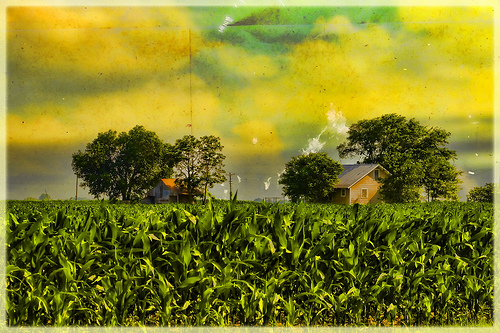 Corn of plenty? Maybe not so much.Photo: Big Grey MareDearest readers,
Corn of plenty? Maybe not so much.Photo: Big Grey MareDearest readers,
Welcome to the second day of our conversation of At Home: A Short History of Private Life by Bill Bryson. You can catch up on yesterday’s chat here.
If you have yet to get a copy of the book, jump in anyway. As a quick catchup, you can listen to Bryson read the introduction here.
Growing plants for food is really a very recent innovation. Early in the book, we learn that in Jericho, the “world’s first true city,” people settled but did not farm. They stopped wandering and became sedentary, yet remained hunter-gatherers.
Bryson writes, “Agriculture started 11,500 years ago in the Levant, but 8,000 years ago in China and only a little over 5,000 years ago in most of the Americas.” He writes that at least 38 theories have been presented as to why people began farming — one being that they wanted to stay in one place so they could brew and drink beer. Ha!
Given that, you might think that the cultivation of grains was a great achievement, but people’s health declined measurably upon transitioning from hunting and gathering to farming. Settled people who relied on farming “became reliant on a much smaller range of foods, which all but ensured dietary insufficiency.”
Bryson writes:
Out of the thirty thousand types of edible plants thought to exist on Earth, just eleven — corn, rice, wheat, potatoes, cassava, sorghum, millet, beans, barley, rye, and oats — account for 93 percent of all the humans eat, and every one of them was first cultivated by our Neolithic ancestors. Exactly the same is true of husbandry. The animals we raise today for food are eaten not because they are notably delectable or nutritious or a pleasure to be around, but because they were the first ones domesticated in the Stone Age.
During the early stages of agriculturalism in the Near East, people shrunk by as much as six inches. Not only were they shorter, they lived shorter lives too. Bryson quotes journalist John Lanchester, who explains, “Rice inhibits the activity of Vitamin A; wheat has a chemical that impedes the action of zinc and can lead to stunted growth; maize is deficient in essential amino acids and contains phytates, which prevent the absorption of iron.”
There’s a growing modern movement to rediscover the pre-agricultural diet of our Paleolithic ancestors. Have you been inspired to eat like a caveman (or should we say “caveperson”)? It’s been called the Flintstone Diet — although if Fred had been eating it, he probably wouldn’t be so chubby!
Has learning about the history of agriculture made you want to take a shopping basket out into the forest? Or would you rather start clearing the land to plant some wheat?
Hungrily,
Umbra
P.S. Bryson is back in his parsonage in England and was not available to join our book club conversation. Thankfully, NPR interviewed Bryson about At Home, and I encourage you to listen here.



